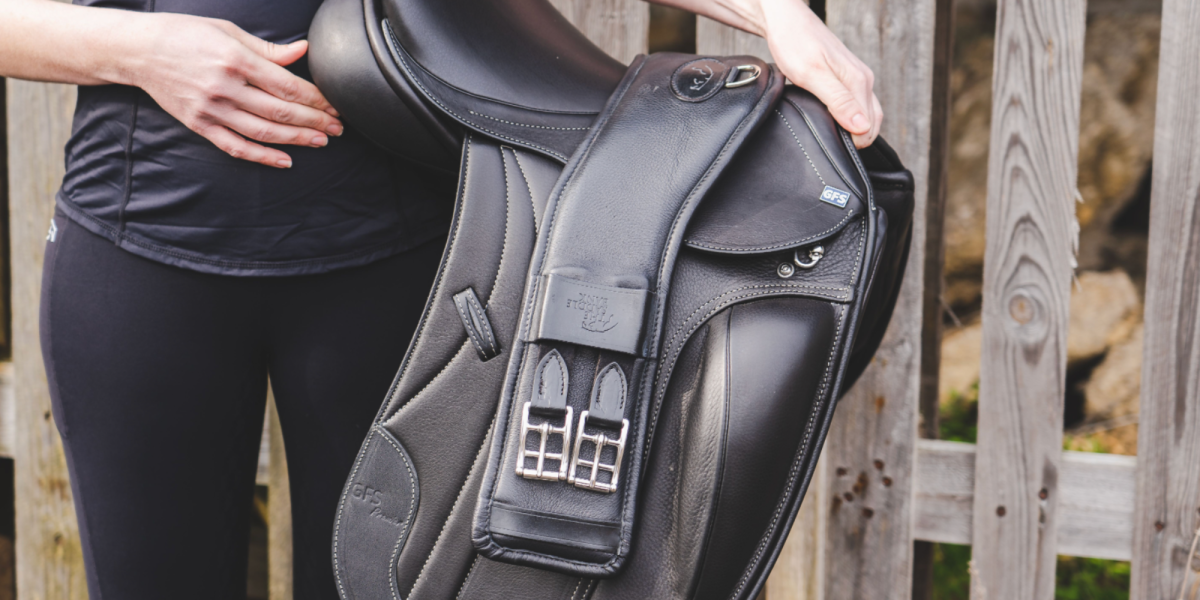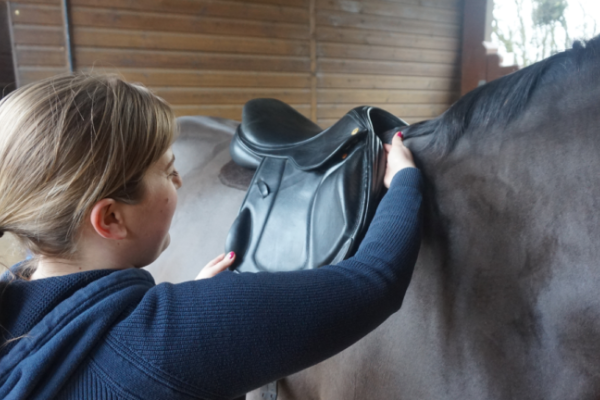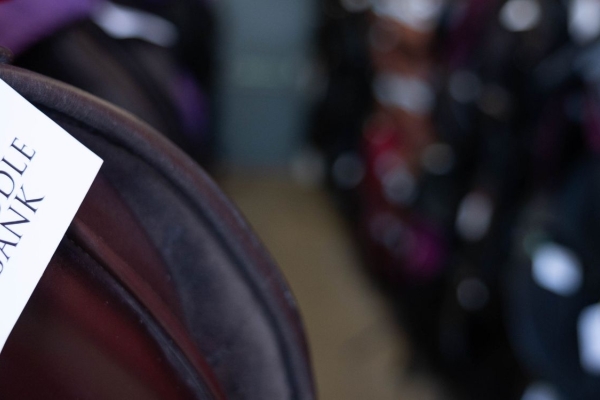What is an Anatomical Girth?
In this article we will discuss all things anatomical girths, and why their popularity has significantly increased within the equestrian community. This should help you decide if an anatomical girth is the right girth choice for you and your horse.
Equestrians find themselves being bombarded with new terminology every day to keep up with, but fear not. Team Saddle Bank are here to make sure they have the lowdown on technical jargon. What does ‘anatomical’ mean here, exactly? The word ‘anatomical’ (sometimes referred to as ‘ergonomic’) means that it takes into consideration the structure of the horse’s body. Or the ‘anatomy’ of the horse. Not only allowing for a greater freedom of natural movement of the horse in each gait but can also allow the saddle to fit better – yes, really!
Why not get in touch with our friendly customer support team via phone 01733 301 488 or email info@thesaddlebank.com. Our lovely team are always happy to help as much as they can and provide you with the information you need to make the best decision for you and your horse.
What Are Girths?
One of the pieces of tack most equestrians will be familiar with is the girth. Which is traditionally a straight padded piece of leather with buckles at either end to attach to the girth straps of the saddle. This secures the saddle in place by fastening it on the girth straps each side and passing under the horses belly.
There are many different types of girth that may need to be taken into consideration when shopping for tack. These can be dependant on your discipline, your horse’s body shape, skin sensitivity, budget, and saddle style.
Many traditional girths are very similar but differ in one or two aspects, such as the materials. For example, for hundreds of years, girths have traditionally been made of leather. Which is long-lasting if it is looked after correctly. More recently equestrians are seeing synthetic leather or neoprene alternatives for those that prefer their tack to be easier to look after, or more economical.
In higher levels of Cross Country and Show Jumping, you may notice horses wearing a much broader type of girth which covers a large area of the horse’s underside known as a Stud Girth. Which is designed to prevent puncture wounds from shoe studs when the horse tucks their front legs underneath them.
The latest research is showing that we equestrians really ought to be considering less traditional styles of girth. Girths have often previously been thought of as a one-size-fits-all piece of tack. Some equestrians are finding that even though they have found the perfect saddle for their horse, that is correctly fitted by a saddle fitter, the fit is still not allowing the horse to have the freedom of movement that they want. The answer could lie in the style of girth.
Why might traditional girths not be right for every horse?
One of the great things about modern technology is the constant pursuit of knowledge on what is best for our equine partners. This can often mean questioning the way that we keep and train horses. Methods and equipment that have been around for hundreds, if not thousands, of years are now being studied to see if they can be improved upon. The girth is no exception.
When a saddle is correctly fitted to a horse, the saddle will be measured to allow for shoulder blade (a bone which sits below the withers, known as the ‘scapula’) movement. A quick check any equestrian can do to see if an anatomical girth might be beneficial to their horse would be to draw an invisible line where the girth straps would sit. Directly vertical down the side of a horse from behind the scapula to where it reaches the stomach. They might find that the line of the girth is in a different position on the horse than the narrowest part of the horse’s belly.
The narrowest part of the belly is usually found just behind the elbow on most horses. This is the position where a traditional girth will naturally gravitate to during riding or exercise.
In an attempt to combat this issue. Some equestrians may be tempted to incorrectly bring the saddle forward on the horse, up the withers. Sometimes even interfering with the movement of the scapula; this is where problems may arise due to the restriction in the horse’s movement. This can prove uncomfortable and lead to lasting musculoskeletal issues.
Here is where the genius of an anatomical girth really comes into play. The secret of an anatomical girth is in its unique curved design.
What is an Anatomical Girth?
While traditional straight girths can fall victim to the issue of sliding forwards to the incorrect position. Anatomical girths are cleverly-designed to comfortably sit further back on the horses belly. A key feature of this style of girth is an extra support curve directly underneath the horse. Which sits in-between the front legs near to the sternum (the sternum joins the left and right sides of the ribcage in the middle) without causing excess pressure on this part of the horse. Whilst holding the girth in the most appropriate place. By securing the saddle with an anatomical girth in the correct place, equestrians are allowing their horse’s scapula to move free from saddle obstruction. Allowing the elbow to move easily without being blocked or rubbing on the girth as it might with a traditional style girth. All while securing the saddle appropriately in its place to avoid slippage.
Most equestrians will be able to see that with the reduction in elbow pressure, and better saddle placement the freedom of movement in the scapula that an anatomical girth will allow. A decent anatomical girth is well worth the investment. Anatomical girths come in a range of sizes and styles to suit most disciplines, breeds of horses, and workloads. However the greatest benefits can be seen in horses with big shoulder movements where the saddle will be secured firmly away from the scapula.
Equines with deep barrels, or those with broader bellies will also find anatomical girths more helpful in keeping the pressure well away from their elbow. Evenly distributing it around the girth and saddle so as not to enable sore spots.
Popular Anatomical Girths
Equestrians will know that if you ride with a saddle then a decent girth is just as essential as the saddle, and finding a good girth can sometimes be a minefield, luckily we have a few expertly-chosen, hugely-popular girths available on our website to suit a variety of saddles from the Loxley Anatomical Long Girth which has split ends to allow for various billeting options making it suitable for most saddle types. To the gorgeous GFS Freedom Excel girth which gives a really high-quality professional feel for an affordable price. It is an all-round comfortable anatomical short girth for any dressage or mono-flap jump saddle. Including leather pockets for you to be able to tuck away excess girth strap for a sleek, professional, well turned-out finish in any competition. As well as protecting the leather straps from the elements, dirt, and sweat.
Bliss of London have also meticulously designed a truly beautiful anatomical soft girth in both long and short options. The short girth is also available in options with or without the front D-ring so that you can attach a breast plate. Stainless steel fixings mean you don’t have to worry about rust. Whilst the dual elastic features ensure a comfortably snug fit which is even on both sides of your horse.
If you wish to browse our fabulous range of anatomical girths and matching accessories. Get in touch about best products or fit for your horse. Or have any questions about the stock we have on offer, please click here for more information.
Thank you!
Thank you for reading this article on Anatomical Girths! We hope you found it useful!
Please do check out our YouTube channel and subscribe for loads of videos, tips and tricks!
We would also love you to join our community of horse lovers on Instagram and Facebook!
Learn more about how saddles should fit….
Are you a horse owner/rider who would like to learn more about saddle fitting? Or learn how the saddle can impact your horses performance and welfare?
Click on the image below to learn more about how to recognise signs of a poor fitting saddle.













